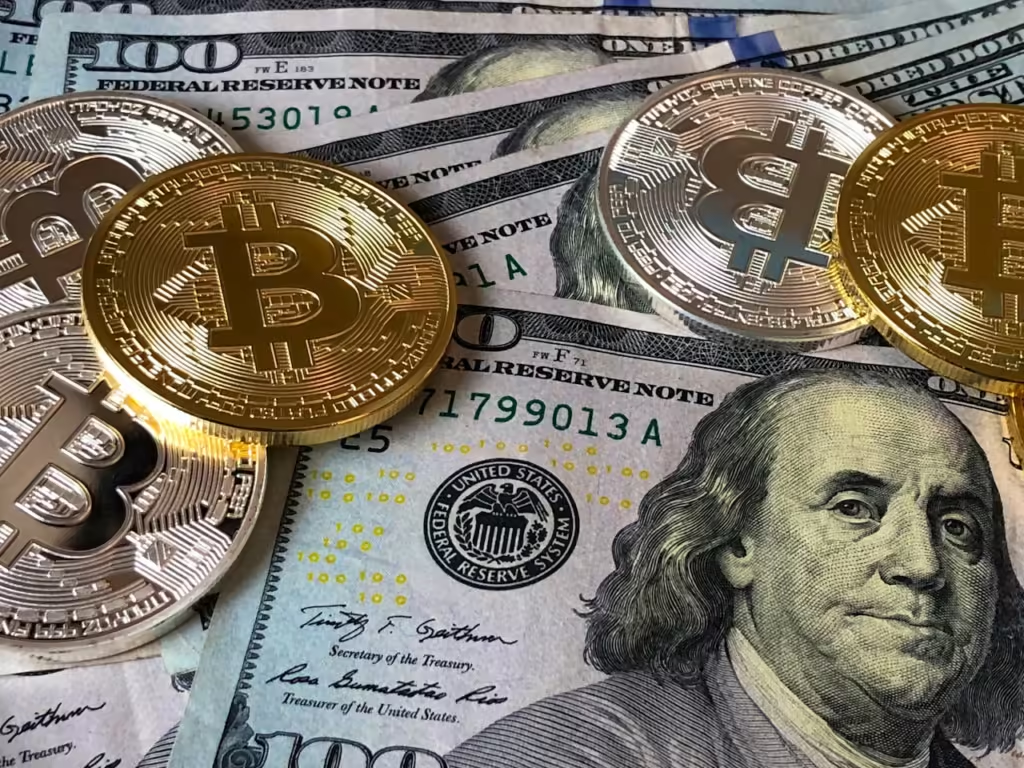Is Now the Time to Invest in Bitcoin Under $65,000?
Bitcoin, often dubbed as “digital gold,” has remained a topic of intense discussion and debate among investors, financial experts, and even those unfamiliar with the intricacies of cryptocurrency. As the flagship cryptocurrency, Bitcoin has experienced dramatic price fluctuations, reaching highs above $60,000 and lows far below that. Currently, with Bitcoin priced under $65,000, many are wondering: is now the time to invest in bitcoin? This article will explore the key factors influencing Bitcoin’s price, the potential benefits and risks of investing, and considerations to help you decide if purchasing Bitcoin at its current price is a wise decision.

Understanding Bitcoin’s Price Volatility:
Bitcoin’s price volatility is both a risk and an opportunity. The cryptocurrency’s value can change rapidly, influenced by various factors ranging from market sentiment to regulatory announcements. Unlike traditional assets, Bitcoin isn’t tied to the earnings of a company or the health of an economy. Instead, its price is driven primarily by supply and demand dynamics.
| Market Sentiment | Regulatory Environment | Supply Constraints |
|---|---|---|
| News about Bitcoin, whether positive or negative, can significantly impact its price. For example, announcements about institutional adoption or regulatory crackdowns can send prices soaring or plummeting. | Government actions, such as bans or endorsements, can also play a critical role in Bitcoin’s price movements. While some countries have embraced Bitcoin, others have imposed restrictions, creating uncertainty. | Bitcoin’s supply is capped at 21 million coins, a feature that creates scarcity. As more coins are mined, the available supply decreases, which could, in theory, drive prices higher as demand increases. |
The Case for Buying Bitcoin Below $65,000:
For those considering whether to invest in Bitcoin while it’s priced under $65,000, there are several compelling reasons to do so.
- Long-Term Growth Potential: Many experts believe that Bitcoin is still in its early stages and has substantial room for growth. With increasing adoption by both institutional investors and retail users, Bitcoin could potentially surpass its previous all-time highs.
- Hedge Against Inflation: In a world where central banks are printing money at unprecedented rates, Bitcoin is often seen as a hedge against inflation. Its finite supply and decentralized nature make it an attractive option for those looking to protect their wealth from currency devaluation.
- Diversification: Adding Bitcoin to a diversified investment portfolio can reduce risk by spreading exposure across different asset classes. While volatile, Bitcoin’s performance often doesn’t correlate with traditional assets, providing a potential buffer during market downturns.
- Institutional Adoption: Major companies and financial institutions are increasingly recognizing Bitcoin’s value, integrating it into their operations. For instance, companies like Tesla and Square have added Bitcoin to their balance sheets, and financial giants like Fidelity are offering Bitcoin-related products to their clients.
- Growing Acceptance: The acceptance of Bitcoin as a legitimate form of payment is increasing. More businesses, from small retailers to large corporations, are beginning to accept Bitcoin as a payment method, further solidifying its role in the global financial system.
Risks Associated with Buying Bitcoin:
While there are several advantages to purchasing Bitcoin, it’s important to be aware of the risks involved.
- Price Volatility: Bitcoin’s price can fluctuate wildly in short periods. While this volatility can lead to significant gains, it can also result in substantial losses, particularly for those who are not prepared to weather the storm.
- Regulatory Risks: The regulatory environment for cryptocurrencies is still evolving. Future regulations could negatively impact Bitcoin’s price or limit its use, making it a riskier investment than traditional assets.
- Security Concerns: Holding Bitcoin comes with unique security challenges. While the blockchain technology behind Bitcoin is secure, the same cannot always be said for the platforms and wallets used to store it. Hacks and scams remain a concern for Bitcoin investors.
- Market Manipulation: The relatively small market size of Bitcoin compared to traditional financial markets makes it susceptible to manipulation. Whales—individuals or entities that hold large amounts of Bitcoin—can influence prices by making significant trades.
- Environmental Impact: Bitcoin mining, the process by which new coins are created and transactions are verified, consumes vast amounts of electricity. This environmental impact has led to criticism and could result in future regulations or shifts in public sentiment.
Historical Performance and Future Predictions:
Bitcoin’s historical performance has been nothing short of spectacular. From its humble beginnings as a digital experiment to a globally recognized asset class, Bitcoin has delivered astronomical returns for early investors. However, this past performance is not necessarily indicative of future results.
| Past Trends | Future Predictions |
|---|---|
| Bitcoin has experienced several boom and bust cycles, with its price reaching new highs after each major correction. For example, after hitting $20,000 in 2017, Bitcoin dropped to around $3,000 before surging past $60,000 in 2021. | Predictions for Bitcoin’s future price vary widely. Some analysts believe Bitcoin could eventually reach $100,000 or even $500,000 as adoption grows and supply dwindles. Others, however, caution that Bitcoin could face significant hurdles, including regulatory challenges and competition from other cryptocurrencies. |
Factors to Consider Before Buying:
If you’re considering purchasing Bitcoin while it’s priced below $65,000, here are some factors to consider:
- Investment Horizon: Are you looking to make a quick profit, or are you willing to hold Bitcoin for several years? Your investment horizon will influence your decision-making process. Long-term holders may be more willing to ride out the volatility, while short-term investors need to be more cautious.
- Risk Tolerance: How much risk are you willing to take on? Bitcoin is a high-risk, high-reward investment. If you have a low tolerance for risk, you might want to limit your exposure to Bitcoin.
- Diversification: How does Bitcoin fit into your overall investment portfolio? It’s generally advisable not to put all your eggs in one basket. Consider how much of your portfolio you’re willing to allocate to Bitcoin.
- Market Timing: Trying to time the market can be risky, especially with an asset as volatile as Bitcoin. Some investors prefer to dollar-cost average, buying small amounts over time to mitigate the impact of price fluctuations.
- Regulatory Environment: Stay informed about potential regulatory changes that could affect Bitcoin. Understanding the legal landscape can help you make more informed decisions.
Conclusion: Is Now the Time to Invest in Bitcoin?
Deciding whether to buy Bitcoin while it’s priced under $65,000 depends on your individual financial situation, risk tolerance, and investment goals. Bitcoin offers the potential for substantial gains, but it also comes with significant risks. If you’re confident in Bitcoin’s long-term prospects and are prepared to handle the volatility, buying now could be a smart move. However, if you’re risk-averse or uncertain about the future of cryptocurrencies, it may be wise to proceed with caution or consult a financial advisor.
In the end, investing in Bitcoin should be a well-considered decision, taking into account both the opportunities and the risks involved. Whether Bitcoin will surge past $65,000 again or face new challenges is uncertain, but what is clear is that Bitcoin remains a powerful force in the world of finance, and its influence is unlikely to diminish anytime soon.









 Bitcoin
Bitcoin  Ethereum
Ethereum  Tether
Tether  XRP
XRP  Solana
Solana  USDC
USDC  Dogecoin
Dogecoin  TRON
TRON  Lido Staked Ether
Lido Staked Ether  Cardano
Cardano  Wrapped Bitcoin
Wrapped Bitcoin  Hyperliquid
Hyperliquid  Wrapped stETH
Wrapped stETH  Sui
Sui  Bitcoin Cash
Bitcoin Cash  Chainlink
Chainlink  LEO Token
LEO Token  Stellar
Stellar  Avalanche
Avalanche  Toncoin
Toncoin  USDS
USDS  Shiba Inu
Shiba Inu  WETH
WETH  Wrapped eETH
Wrapped eETH  Hedera
Hedera  Litecoin
Litecoin  Binance Bridged USDT (BNB Smart Chain)
Binance Bridged USDT (BNB Smart Chain)  Ethena USDe
Ethena USDe  Monero
Monero  Polkadot
Polkadot  WhiteBIT Coin
WhiteBIT Coin  Bitget Token
Bitget Token  Coinbase Wrapped BTC
Coinbase Wrapped BTC  Pepe
Pepe  Pi Network
Pi Network  Uniswap
Uniswap  Aave
Aave  Dai
Dai  Ethena Staked USDe
Ethena Staked USDe  Bittensor
Bittensor  OKB
OKB  BlackRock USD Institutional Digital Liquidity Fund
BlackRock USD Institutional Digital Liquidity Fund  Aptos
Aptos  Internet Computer
Internet Computer  NEAR Protocol
NEAR Protocol  Cronos
Cronos  Ethereum Classic
Ethereum Classic  Jito Staked SOL
Jito Staked SOL  Ondo
Ondo